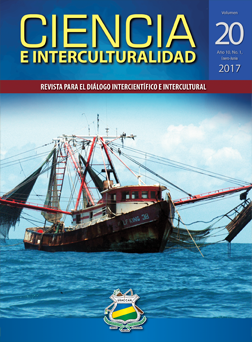Calidad del agua potable y su efecto en la salud de la comunidad de Kamla, Costa Caribe Norte de Nicaragua
Resumen
Esta investigación se realizó en la comunidad indígena de Kamla en la Región Autónoma de la Costa Caribe Nicaragüense (RACCN). Se tomaron muestras en diecisiete sitios, como los abastecedores de agua. En cada sitio se valoraron los parámetros físico-químicos: oxígeno disuelto, pH, temperatura, turbidez, demanda bioquímica, nitratos, fosfatos, sólidos totales disueltos; despuntando dos parámetros (pH y DBO5), como los que están alterando la calidad; y, desde el punto de vista bacteriológico fueron: Coliformes fecales y Escherichia coli, datos que presentan una contaminación alta del agua examinada, según las comparaciones con la Norma Nicaragüense (NTON 09 001 99) y Norma CAPRE. En relación a los resultados del método ICA, clasificaron de regular la calidad del agua superficial, requiriendo, por tanto, de un tratamiento potabilizador adecuado. Además, se realizó una valoración de macro invertebrados bentónicos en los ríos seleccionados para poder establecer el índice biológico de calidad de estas aguas, con resultados negativos. Los resultados del agua de los pozos, muestran que no son aptas para el consumo humano en las condiciones actuales, ya que presentan altos contenidos de bacterias Coliformes fecales y Escherichia coli, requiriendo de un tratamiento de desinfección intensiva. Se establecen medidas preventivas y de mitigación para mejorar la calidad del recurso hídrico en la comunidad de Kamla, lo que redundará en mejorar la calidad de vida de los habitantes de la comunidad.
Descargas
El autor mantiene los derechos morales y permite la cesión gratuita, exclusiva y por plazo indefinido de sus derechos patrimoniales de autoría a la Universidad de las Regiones Autónomas de la Costa Caribe Nicaraguense (URACCAN).






